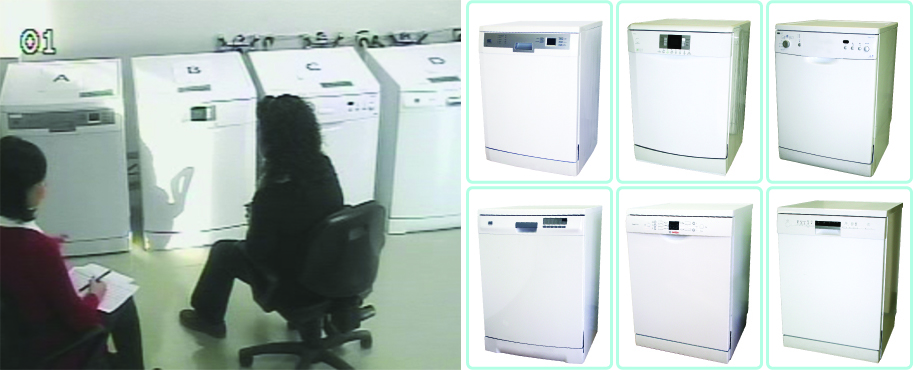Benchmarking
Last Updated:
Perceived Spaciousness in Refrigerator Interior Design
The aim of the study was to identify dimensions of perceived spaciousness in refrigerator design and to specify the product attributes that have effects on this perception. The study had two consecutive stages. In the first stage, dimensions of perceived spaciousness were identified through a benchmarking study on four different refrigerator designs evaluated by 30 participants in a laboratory setting. In the second stage, new refrigerator designs, which were developed by Arçelik by considering the outcomes of the first stage, were tested based on the dimensions of perceived spaciousness. Outcomes of the study were composed of guidelines that were to be considered, while making investment decisions for the new refrigerator designs.

Perceived Quality for Dishwashers, A Benchmarking Study
The aim of the study was to investigate product qualities which constitute added value for the dishwasher design and evaluate the two products developed by the firm in terms of their perceived qualities. Data was gathered through a benchmarking study which involved six different dishwasher designs to be evaluated by 32 participants in a laboratory setting. As a result of the study, design principles, which can raise the competitive power of the firm and should be considered while improving and developing interior and exterior parts of the dishwasher, were suggested.

Investigation of Changes in Dishwasher Rack Design
This study aimed to develop a framework for trust in design to maintain long term acceptance of smart products. Within the scope of the study, to observe long term user experience, Vitra V-Care Smart Toilet was selected as a case. The results involved user evaluations of the smart toilet, dimensions of trust in smart toilet interaction and longitudinal evaluation of user acceptance for this product.

Perceived Quality for Midi-buses
The study aimed to reveal and define the main relationships between the perceived quality variables and product components, to define the dominant user evaluation criteria and convert the research findings into general design guidelines that would lead the firm during midi-bus interior and exterior design. Two complementary methods were used in the study. In the first phase, the midi-bus was evaluated with two competing brands’ models with a comparative lab study based on driver and passenger examinations. The dominant constructs regarding perceived quality and the main product components that affect user preferences are classified by this way. The second phase was composed of developing an information system that would represent the findings and relationships to designers, in a way to be integrated in the design process. Therefore the main emphasis was on modeling the complex relationships between the product components and perceived quality dimensions, with clear representations and visuals.
Washing Machines Rack System Field Tests
In this study, a new dishwasher rack system was evaluated, in compliance with user expectations and usage patterns. The study was carried out for 4 weeks, with a total number of 51 users from different cities. New rack systems were installed to users’ machines and users' experiences of the new rack systems were observed. With the aim to give the design directions, all user experiences during the usage were questioned in depth, using different research techniques.

Perceived Quality for Mini-vans
The project aimed to define the specifications for the mini-van interior to increase the added-value in the consumer market. For this purpose, a model for the perceived quality for mini-van interiors was developed. In the first phase, the purchasing behavior in the selling point was observed through video camera installations and user interviews, to classify the purchase criteria and related important car interior elements which affect the product’s first impact. In the second and core phase, the product was evaluated with a comparative study with two competing models in the market with user participation in the lab environment, and the dominant product elements and assessment criteria were explored. A complementary eye-tracking study on 2-D images revealed more in-depth information about the user assessment process. At the final stage, the findings of the multiple methods were combined to develop design principles.

User Requirements and Expectations Analysis and Benchmarking for Dishwasher Rack Design
The project aimed to conduct a user-centered design process to develop a dishwasher rack that conforms to user requirements and preferences. In the first phase, dishwasher rack usage was explored with user interviews on the photographs of their own dishwasher racks. Then the users were asked to evaluate competing brands’ rack designs in a detailed way using a structured interview based on repertory grid technique. In the third phase, a questionnaire study was conducted to evaluate the lab study findings. The results of these multiple studies were re-examined together to develop a model that explains the critical relationships and variables. Based on this model, design recommendations were developed and classified in terms of core concepts such as cost and flexibility. Following the presentation of the study findings, research results were validated, by conducting a comparative study in the lab environment.

